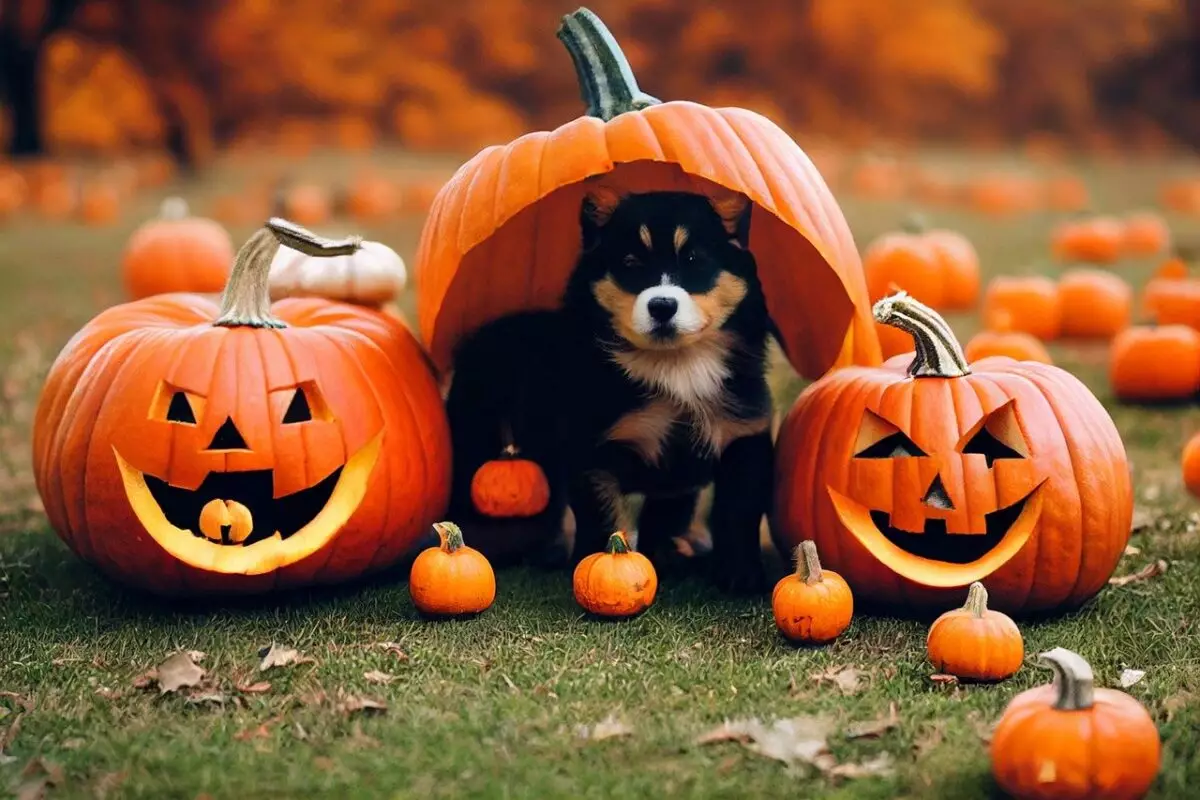Halloween is an exhilarating time for many, filled with costumes, candy, and festivities. However, for our furry friends, this holiday can pose various risks that require thoughtful planning. From unexpected doorbell rings to tempting but hazardous treats, the Halloween season can become overwhelming for dogs. This article aims to highlight essential precautions to safeguard your canine companion during one of the most spirited times of the year.
The Risks of Halloween Treats
For many, Halloween revolves around candy consumption, but it’s crucial to remember that many popular treats are not safe for dogs. Chocolate is often the most well-known offender, but other ingredients like xylitol, commonly found in sugar-free candies, can be fatal for dogs. Even items like candy wrappers can pose significant risks by causing digestive obstructions or choking hazards. To protect your dog, store all snacks out of their reach, and educate all household members about the dangers of sharing human food with pets. If your dog does indulge in some outlawed treats, don’t hesitate to contact your veterinarian for assistance.
The excitement of decorating for Halloween should not overshadow the safety of your dogs. Many festive decorations, such as eerie fake cobwebs and glowing items like glow sticks, can result in choking or gastrointestinal issues if ingested. Likewise, real candles and lit jack-o’-lanterns may cause burns or start a fire. Opt for pet-friendly decoration alternatives, like battery-operated candles and LED lights, to mitigate these hazards. When using real pumpkins, ensure they are free from toxic substances and avoid sharp decorative elements that could easily injure your dog.
Costume Considerations for Canine Companions
Dressing up your pet can be a delightful addition to the Halloween spirit, but costumes must prioritize your dog’s comfort. Not every dog is receptive to wearing apparel; some may find it constricting or frightening. If you decide to outfit your dog in a costume, select one that allows freedom of movement and proper airflow. Avoid costumes with small parts that may be chewed off and cause harm. Allow your pet an acclimatization period before the big night—if they show any signs of discomfort, it’s best to skip the costume.
Creating a Safe and Calm Environment
The hustle and bustle of Halloween night—especially frequent doorbell rings and strangers in costumes—can be overwhelming for many dogs. To help reduce anxiety, designate a quiet space in your home for your dog. This could include creating a cozy area away from the front door, stocked with their favorite toys and blankets. Consider using calming aids like soothing music or white noise machines to mask outside sounds. Such accommodations can help reduce stress and keep your pet calm amid the festivities.
If you plan to take your dog out for a stroll on Halloween night, visibility must be a priority. With lowered visibility due to less street lighting and the added distractions of costumed children, accidents can occur. Equip your furry friend with reflective gear—like collars, harnesses, and leashes—and consider employing LED light attachments to ensure they remain visible in the dark. Additionally, carry a flashlight to illuminate your path, which keeps both you and your pooch safe during evening outings.
Halloween typically involves significant traffic at the front door as trick-or-treaters come and go. This constant open-and-close scenario can lead to potential escapes for excitable or anxious dogs. To mitigate the risk, it’s advisable to secure your dog in a safe space, whether in a separate room or behind a baby gate. This prevents them from dashing outside and keeps them secured away from the overwhelming sights and sounds of the festivities.
Pet-Friendly Treats at Parties
Whether hosting a Halloween gathering or attending one, food safety for pets must remain a priority. Many human foods, such as onions and garlic, are harmful and should never be shared. While it may be tempting to share parts of your Halloween feast with your dog, it’s essential to resist the urge. Instead, provide your dog with suitable treats that allow them to join in the festive spirit without the associated risks of hazardous human food.
The presence of costumed strangers can be unnerving for many dogs, potentially causing anxiety or fear. Recognize your dog’s comfort level with unfamiliar faces and let them approach new visitors at their own pace. If your dog shows apprehension, avoid forcing interactions; instead, encourage calm behavior with praise and treats. If you suspect that a Halloween event may be too overwhelming, consider leaving your dog at home to ensure their comfort and security.
Final Safety Reminders
With increased activity on Halloween, the risk of dogs escaping or getting lost rises significantly. Make sure your dog wears a collar with updated ID tags and consider microchipping them as an added precaution. This identification can be invaluable if your pet slips out during the chaos. Also, steer clear of glow sticks, which can cause distress if chewed.
By anticipating potential hazards and taking proactive measures, you can help create a safe and enjoyable Halloween experience for both you and your dog. With just a bit of planning and mindfulness, you can ensure that your furry friend enjoys the spooky celebrations as much as you do—minus the dangers that often accompany them.

